List items
Items from the current list are shown below.
Blog
26 Oct 2020 : Glass or plastic. Which is really better for the environment? #
For the last 14 months I’ve been collecting data about how much rubbish I produce, broken down into various categories (paper, card, glass, metal, returnables, compost, plastic and general). I’ve had two aims: first to gather data about how much rubbish I generate and second to try to reduce my overall output for environmental reasons.
One of the encouraging things about this process is that it seems to have worked. If I look at my waste output between mid-August and mid-October 2020 and compare it to the same period last year, my output has reduced from an average of 366 g per day to 126 g per day, a two thirds decrease. Here’s the breakdown of how the two years compare across the categories.
I’ve been using a variety of different techniques to achieve this. For example my tolerance for eating food past it’s best-before date has increased considerably. There’s a sticker above my letter box asking not to receive any junk mail. I also buy food with lighter packaging: cardboard packets of beans instead of tins, cartons of wine instead of bottles. Wherever possible I buy plastic pots and bottles instead of glass.
Glass is really heavy, so cutting it out has been a really easy way to reduce the weight of my waste and as you can see from the graph, this is where I made my biggest decrease. But for many this choice will seem controversial, and many times when I’ve picked a plastic bottle from the shelf at the grocer instead of glass, I’ve wondered whether I was driven more by hitting my weight targets than any real environmental benefits.
So I thought I’d better look into the relative environmental impacts of glass as compared to plastic. Plastic has had a bad rap recently for having a terrible impact on the marine environment. But this is rather emotive, and is only one facet of the environmental impact of a product. Actually figuring out the full life cycle environmental impact of something is fiendishly difficult. You have to consider the production costs, transportation costs, recycling costs and much more besides. Happily Roberta Stefanini, Giulia Borghesi, Anna Ronzano and Giuseppe Vignali from the University of Parma have done all of this hard work already. Their paper “Plastic or glass: a new environmental assessment with a marine litter indicator for the comparison of pasteurized milk bottle”, recently published in the International Journal of Life Cycle Assessment, compares the environmental impact of glass and plastic polyethylene terephthalate (PET) across a range of environmental factors for the full life cycle of the packaging. This includes comparing non-recycled PET with recycled PET (R-PET) bottles, as well as non-returnable glass and returnable glass bottles.
The indicators used for comparison are “global warming (kg CO2 eq), stratospheric ozone depletion (kg CFC11 eq), terrestrial acidification (kg SO2 eq), fossil resource scarcity (kg oil eq), water consumption (m3) and human carcinogenic toxicity (kg 1.4-DCB)”. In addition they also introduce a new marine litter indicator (MLI).
What they find is surprisingly clear-cut. Across all of the indicators apart from MLI the same pattern emerges: R-PET is the least environmentally damaging, followed by PET. Returnable glass bottles follow, with non-returnable glass bottles the worst by a large margin. We can see this in the six graphs below. There’s a lot of detail in them, but I wanted to include them in full because it’s fascinating to see both how complex the results are and also how the different processes contribute to the final environmental cost. But in spite of the detail the overall conclusion from each graph is clear: non returnable glass is worse than the others (in all of the graphs higher is worse).
It’s a surprising definitive set of results. So why is it like this? The authors of the paper put this more clearly and succinctly than I could manage.
It’s worth noting that in the case of returnable glass bottles the authors assume that a bottle is reused eight times before having to be recycled. This is the number of reuses after which a bottle is likely to become broken or too scuffed to be used again. They determine that a bottle would have to be reused thirty times before its global warming potential reaches similar levels to those of a PET bottle, at which point the other criteria would still be worse environmentally.
The remaining criterion, not shown in these graphs, is that of the MLI. Here things change. MLI is proposed in the paper as an approach to comparing the relative impact on the marine ecosystem of the different packaging types. MLI is defined as follows:
$$
{\rm MLI} = \frac{F_1^{f_1} \times F_4^{f_4}}{F_2^{f_2} \times F_3^{f_3}}
$$
where $F_1$ is the number of disbursed containers, $F_2$ is the incentive for returning a bottle (e.g. the cash given for returning it), $F_3$ is the weight of the packaging material and $F_4$ is the material degradation over time (400 years in the case of glass, 100 years for PET). The values $f_1, \ldots, f_4$ are weights used to capture the relative importance of each of the four inputs.
The results for various weightings are given in this table (taken from the paper but amended slightly for clarity). As with the graphs, a higher number is environmentally worse.
This table shows that independent of the weights applied, non-returnable glass has the highest environmental impact. However, the comparison between R-PET and returnable glass is more nuanced. The authors conclude the following:
The paper is thorough and we’ve covered a lot of detail here, but the conclusion for me is much simpler: from an environmental perspective returnable PET plastic is clearly better than glass across multiple criteria. The only place where this doesn’t apply is for MLI, for which it’s much harder to make definitive judgements.
It seems therefore, that I should carry on choosing plastic packaging over glass whenever possible. That will benefit both my weight targets and the environment.
One of the encouraging things about this process is that it seems to have worked. If I look at my waste output between mid-August and mid-October 2020 and compare it to the same period last year, my output has reduced from an average of 366 g per day to 126 g per day, a two thirds decrease. Here’s the breakdown of how the two years compare across the categories.
I’ve been using a variety of different techniques to achieve this. For example my tolerance for eating food past it’s best-before date has increased considerably. There’s a sticker above my letter box asking not to receive any junk mail. I also buy food with lighter packaging: cardboard packets of beans instead of tins, cartons of wine instead of bottles. Wherever possible I buy plastic pots and bottles instead of glass.
Glass is really heavy, so cutting it out has been a really easy way to reduce the weight of my waste and as you can see from the graph, this is where I made my biggest decrease. But for many this choice will seem controversial, and many times when I’ve picked a plastic bottle from the shelf at the grocer instead of glass, I’ve wondered whether I was driven more by hitting my weight targets than any real environmental benefits.
So I thought I’d better look into the relative environmental impacts of glass as compared to plastic. Plastic has had a bad rap recently for having a terrible impact on the marine environment. But this is rather emotive, and is only one facet of the environmental impact of a product. Actually figuring out the full life cycle environmental impact of something is fiendishly difficult. You have to consider the production costs, transportation costs, recycling costs and much more besides. Happily Roberta Stefanini, Giulia Borghesi, Anna Ronzano and Giuseppe Vignali from the University of Parma have done all of this hard work already. Their paper “Plastic or glass: a new environmental assessment with a marine litter indicator for the comparison of pasteurized milk bottle”, recently published in the International Journal of Life Cycle Assessment, compares the environmental impact of glass and plastic polyethylene terephthalate (PET) across a range of environmental factors for the full life cycle of the packaging. This includes comparing non-recycled PET with recycled PET (R-PET) bottles, as well as non-returnable glass and returnable glass bottles.
The indicators used for comparison are “global warming (kg CO2 eq), stratospheric ozone depletion (kg CFC11 eq), terrestrial acidification (kg SO2 eq), fossil resource scarcity (kg oil eq), water consumption (m3) and human carcinogenic toxicity (kg 1.4-DCB)”. In addition they also introduce a new marine litter indicator (MLI).
What they find is surprisingly clear-cut. Across all of the indicators apart from MLI the same pattern emerges: R-PET is the least environmentally damaging, followed by PET. Returnable glass bottles follow, with non-returnable glass bottles the worst by a large margin. We can see this in the six graphs below. There’s a lot of detail in them, but I wanted to include them in full because it’s fascinating to see both how complex the results are and also how the different processes contribute to the final environmental cost. But in spite of the detail the overall conclusion from each graph is clear: non returnable glass is worse than the others (in all of the graphs higher is worse).
It’s a surprising definitive set of results. So why is it like this? The authors of the paper put this more clearly and succinctly than I could manage.
"glass bottles have the highest impact on environment, because of their production and transports. In fact, to create a glass bottle a lot of energy is used to reach high temperature. Moreover, plastics can be transported in octabins before the bottle formation in the food companies, while glass bottles are already transported in their final form, that takes up a lot of places and less bottles can be carried at each journey. Finally, glass bottle’s weight is very high, and trucks consume more, emitting more pollutants. For these reasons, glass bottle appears as the most impactful material according to global warming, stratospheric ozone depletion, terrestrial acidification, fossil resource scarcity and water consumption."
It’s worth noting that in the case of returnable glass bottles the authors assume that a bottle is reused eight times before having to be recycled. This is the number of reuses after which a bottle is likely to become broken or too scuffed to be used again. They determine that a bottle would have to be reused thirty times before its global warming potential reaches similar levels to those of a PET bottle, at which point the other criteria would still be worse environmentally.
The remaining criterion, not shown in these graphs, is that of the MLI. Here things change. MLI is proposed in the paper as an approach to comparing the relative impact on the marine ecosystem of the different packaging types. MLI is defined as follows:
$$
{\rm MLI} = \frac{F_1^{f_1} \times F_4^{f_4}}{F_2^{f_2} \times F_3^{f_3}}
$$
where $F_1$ is the number of disbursed containers, $F_2$ is the incentive for returning a bottle (e.g. the cash given for returning it), $F_3$ is the weight of the packaging material and $F_4$ is the material degradation over time (400 years in the case of glass, 100 years for PET). The values $f_1, \ldots, f_4$ are weights used to capture the relative importance of each of the four inputs.
The results for various weightings are given in this table (taken from the paper but amended slightly for clarity). As with the graphs, a higher number is environmentally worse.
| MLI weights $f_1, \ldots, f_4$ | PET | R-PET | Non-returnable glass | Returnable glass |
|---|---|---|---|---|
| 3, 2, 1, 2 | 0.56 | 0.56 | 19.47 | 0.78 |
| 2, 2, 1, 1 | 5.56 | 5.56 | 21.16 | 0.85 |
| 1, 1, ½, 1 | 0.75 | 0.75 | 4.60 | 0.92 |
| 2, 2, ½, 1 | 1.24 | 1.24 | 21.16 | 0.85 |
| 2, 3, 1, 2 | 0.93 | 0.93 | 105.80 | 0.85 |
This table shows that independent of the weights applied, non-returnable glass has the highest environmental impact. However, the comparison between R-PET and returnable glass is more nuanced. The authors conclude the following:
“According to the MLI proposed, the best solution would be using returnable glass bottles, thanks to the low number of bottles needed and therefore dispersed, their weight and return incentives. However, it is important to remember that the environmental dispersion of bottle is strictly related to human’s behaviour: consequently, it is important to raise the consumers’ awareness on this topic.”
The paper is thorough and we’ve covered a lot of detail here, but the conclusion for me is much simpler: from an environmental perspective returnable PET plastic is clearly better than glass across multiple criteria. The only place where this doesn’t apply is for MLI, for which it’s much harder to make definitive judgements.
It seems therefore, that I should carry on choosing plastic packaging over glass whenever possible. That will benefit both my weight targets and the environment.
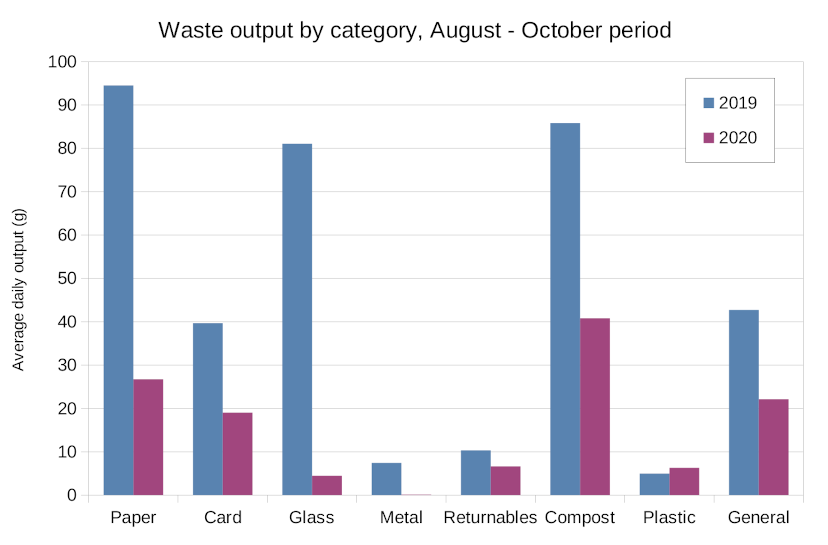


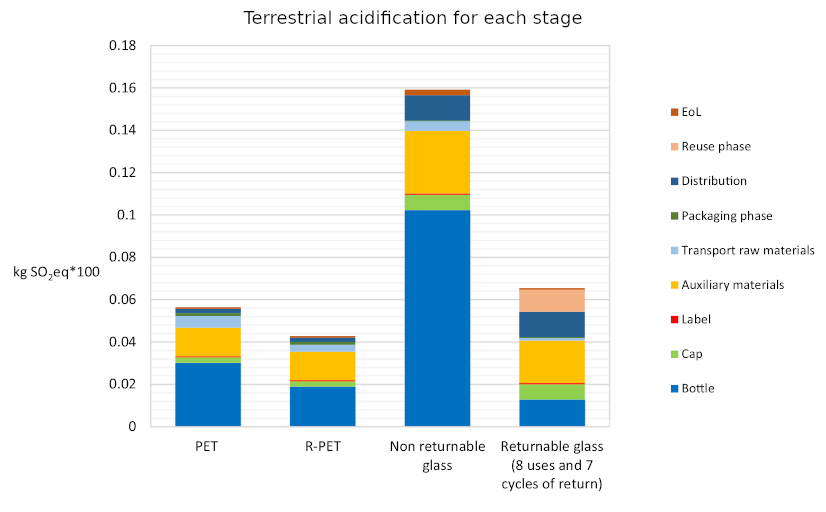
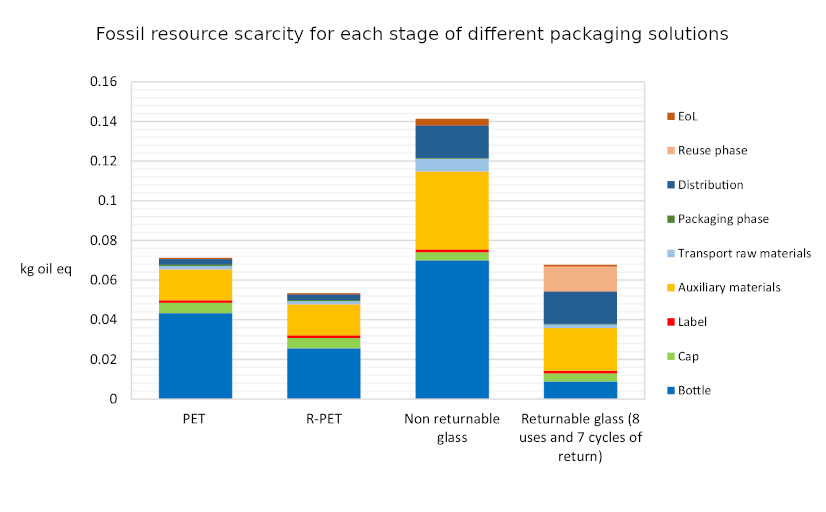
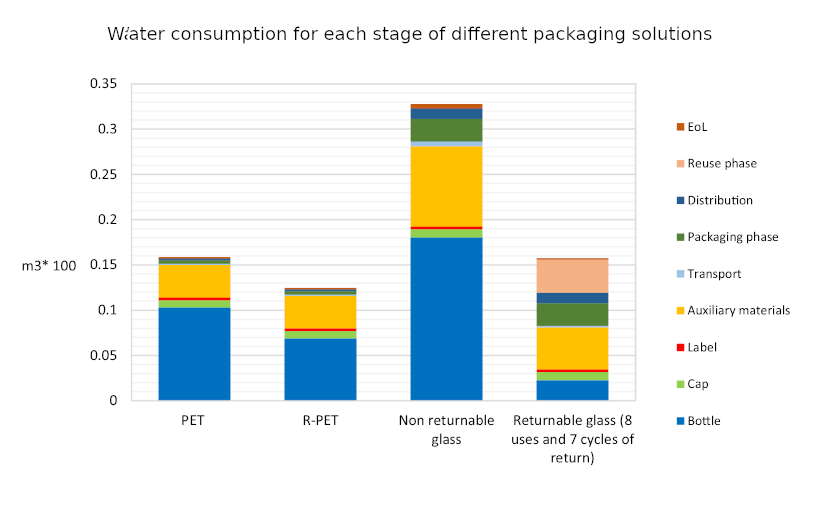
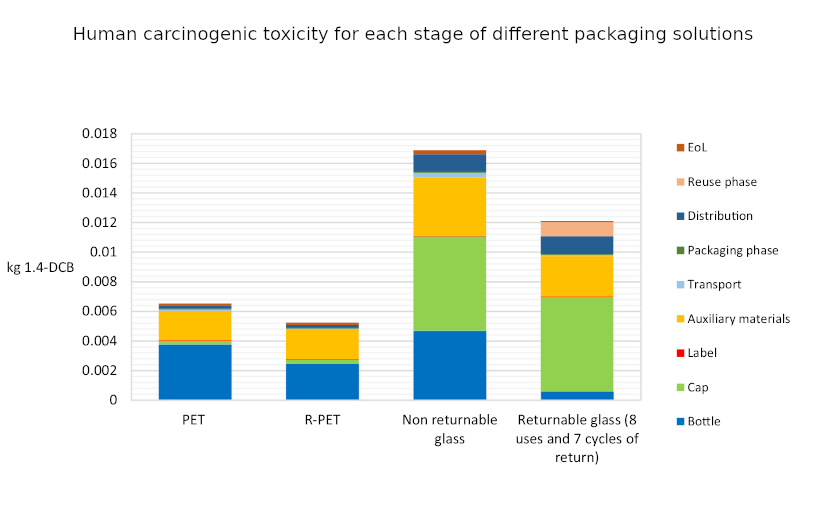
Comments
Uncover Disqus comments